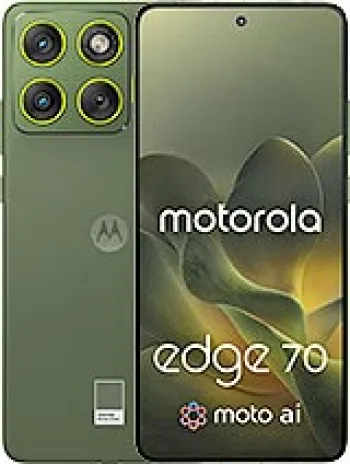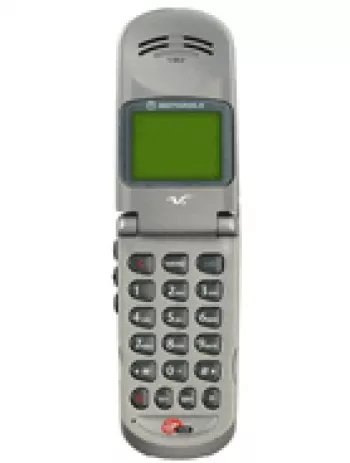
Overview
The Motorola XT532, released in December 2011, is a device that carved its niche in the burgeoning smartphone market of its time. As a product of Motorola, a company renowned for its history in mobile communication innovation, the XT532 symbolizes an era where dual-SIM capabilities and Android OS enticed more users towards smartphones. Though it is now discontinued, the phone serves as an interesting snapshot of early smartphone development.
Design and Build
With dimensions measuring 114 x 62 x 12 mm and a weight of 115 grams, the Motorola XT532 offered a compact and ergonomic design, characteristic of the smartphones of its period. Its construction was sturdy, catering to the needs of consumers seeking durability. The device housed a dual SIM setup, emphasizing convenience for users requiring business and personal numbers on-the-go, avoiding the hassle of carrying multiple phones.
Display
The smartphone featured a 3.5-inch TFT display with 256K colors, providing a decent visual experience, albeit modest by today's standards. The resolution was set at 320 x 480 pixels with a 3:2 ratio, resulting in a pixel density of approximately 165 ppi. Though not equipped with high-definition capabilities, the screen met the contemporary needs of users for basic media consumption and interaction.
Platform and Performance
Operating on Android 2.3.7 Gingerbread, the Motorola XT532 provided users with an interface that was intuitive for the era. The Qualcomm MSM7227T-1 Snapdragon S1 chipset powered the device, alongside an 800 MHz CPU and an Adreno 200 GPU. The performance, while modest, handled standard applications and tasks effectively, addressing user needs for communication, casual gaming, and media playback.
Memory and Storage
Equipped with 512MB of internal storage and 512MB of RAM, the XT532 offered basic memory capabilities. The inclusion of a microSDHC slot allowed for storage expansion, a critical feature at the time, providing users the flexibility to store additional media such as photos and music beyond the internal limitations.
Camera Capabilities
The Motorola XT532 featured a 5 MP rear camera with autofocus and LED flash, offering respectable photography capabilities for the time. This made capturing day-to-day moments convenient, while video recording added a multimedia element for users. A VGA front-facing camera was also included, providing basic functionality for selfies and video calls.
Battery Life
Powered by a removable Li-Ion 1500 mAh battery, the XT532 offered decent battery life, with up to 160 hours of standby time and up to 6 hours and 20 minutes of talk time. Its battery life catered well to the needs of users during its time, allowing for a full day of standard usage without necessitating frequent recharges.
Connectivity and Additional Features
The XT532 supported GSM and HSPA technologies and featured Wi-Fi connectivity with hotspot capabilities, Bluetooth 2.1, GPS with A-GPS support, and Stereo FM Radio. Such features ensured that users remained connected to the internet, media, and other devices effortlessly. The inclusion of a microUSB 2.0 port facilitated data transfer and charging.
Additional features included sensors such as accelerometer, proximity, and compass. The device also had a 3.5mm headphone jack for audio listening and a loudspeaker mode for hands-free calls.
Market Positioning and Price
Initially launched at a price point of approximately 70 EUR, the Motorola XT532 was positioned as an affordable smartphone alternative. It catered primarily to budget-conscious consumers who valued dual-SIM functionality and sought basic smartphone features without a significant financial investment.
Conclusion
The Motorola XT532, with its dual-SIM capability, compact design, and essential smartphone features, represents an important step in the evolution of smartphones. Although it is discontinued, its significance lies in demonstrating the technological priorities and consumer expectations during the early 2010s. While not a powerhouse of performance or innovation by today's standards, the XT532 served its purpose within its market, highlighting Motorola's commitment to accessible communication solutions during that era.
Key Features of Motorola XT532
- Dual SIM capability (Mini-SIM, dual stand-by)
- Compact and lightweight design (115 g)
- 3.5-inch TFT display with 256K colors
- 5 MP main camera with autofocus and LED flash
- MicroSDHC card slot for expandable storage
- Android 2.3.7 (Gingerbread) OS
- Qualcomm MSM7227T-1 Snapdragon S1 chipset
- Wi-Fi 802.11 b/g/n and hotspot capability
- GPS with A-GPS support
- Stereo FM radio with RDS
- Removable 1500 mAh Li-Ion battery
- Affordable price point at about 70 EUR
Disadvantages of Motorola XT532
- Outdated Android version (2.3.7 Gingerbread) which may not support modern apps and security updates.
- Low-resolution display (320 x 480 pixels, ~165 ppi density), which may result in poor visual quality.
- Limited internal storage (512MB RAM), which can restrict the installation of several apps and storage of media.
- Weak processor (800 MHz), which might result in slow performance, especially with multitasking.
- Basic camera capabilities with only 5 MP for the main camera and VGA for the selfie camera.
- No support for 4G/LTE, limited to 3G networks which can result in slower internet speeds.
- Discontinued model, which means no official support or repairs may be available.
- Limited battery life with a 1500 mAh removable battery.

View Also
More Phones
All Rights Reserved +14266 Phones © Mobilawy 2025

























